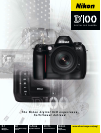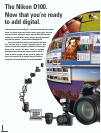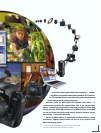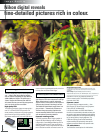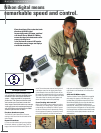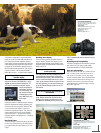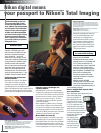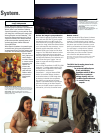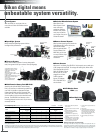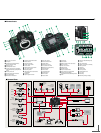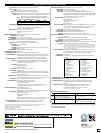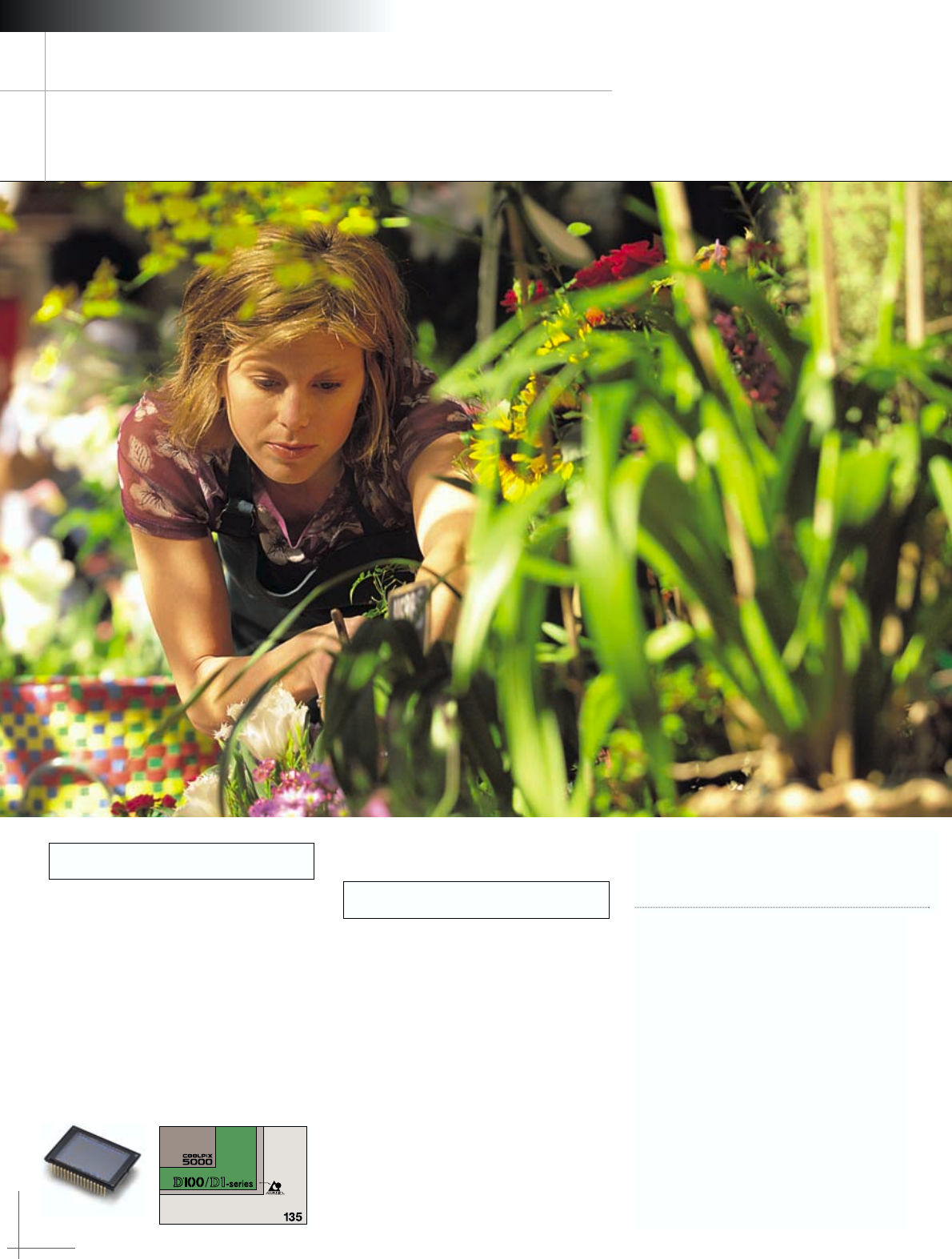
The Nikon D100 offers what no other digital SLR
can — Nikon’s Total Image Quality. It begins
with 6.1 effective megapixels for high-definition
3,008 x 2,000-pixel images. This allows you to
capture images with extremely fine detail. It’s
the solution that lets you make big enlargements
and crop closely to show more detail.
High-quality CCD
The D100’s high-resolution images are captured by a
new 23.7 x 15.6mm RGB CCD image sensor. This
sensor provides a wide dynamic range and captures a
great amount of light for high sensitivity. The CCD
also features reduced noise, and a wide S/N ratio to
6.1-megapixel resolution
ensure truly stunning photographic quality in the form
of sharp, clear and smooth-toned images.
Often, achieving great results means getting the
right exposure and colour temperature readings.
When white balance is precise, colouration
appears more accurate, while correct exposure
enhances the richness of the image’s colours.
The D100’s 3D Digital Matrix Image Control can
give you both — automatically. It features an
advanced image-processing algorithm that
ensures extremely faithful colour reproduction
with exceptionally smooth gradations.
Exposure metering modes
The D100 incorporates Nikon’s highly regarded 10-
segment 3D Matrix Metering mode for intelligent
image analysis. Centre-Weighted Metering and Five
Spot Meters linked to each AF area round out the
metering selection. A key concept behind the D100 is
that it offers both automatic and manual control. Let
Accurate exposure and faithful colours
automatic do it all for you, tweak the automatic, or
switch to manual control. This flexibility helps add to
the power of the D100.
Exposure control
The camera offers four exposure modes — Auto-
Multi Program (P), Shutter-Priority Auto (S), Aperture-
Priority Auto (A), and Manual (M).
In all exposure modes, the D100’s Noise Reduction
function can be automatically activated at slower shut-
ter speeds to help overcome background noise buildup.
Exposure compensation and Auto Exposure Bracketing
let you see the effects of varying brightness. The
D100’s new ISO Auto Control mode automatically
adjusts sensitivity (ISO equivalency) when optimal
exposure cannot be achieved in any exposure mode.
TTL white balance
The D100 offers several options for white balance
IX240 format:
C type
Image area size
comparison
4
3D Digital Matrix Image Control
For candid portraits like this, the AF-S Zoom-Nikkor 80-200mm f/2.8D IF-ED is ideal.
3D Digital Matrix Image Control provided accurate exposure and colour reproduction,
automatically.
Camera settings ◆ Exposure metering mode: 3D Matrix Metering
◆ Exposure mode: Aperture-Priority Auto ◆ Shutter Speed: 1/750 sec. ◆ Aperture: f/3.5
Nikon digital reveals
fine-detailed pictures rich in colour.
Image Quality



